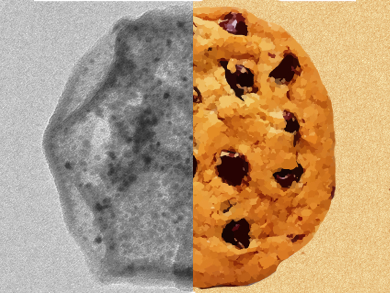The performance of lithium-ion batteries depends heavily on the electrode materials. Transition metal oxide nanostructures have shown promise as an alternative to the commonly used graphite anodes, due to their high theoretical capacities. However, they have problems such as low conductivity and high volume changes during battery cycles. Combining transition metal oxides with graphitic materials could be a possible solution for the synthesis of improved anode materials.
Dawei Wang, Cheng-Yong Su, and colleagues, Sun Yat-Sen University, Guangzhou, China, have synthesized CoO nanoparticle “cookies” that embed the metal oxide nanoparticles in a carbon material. The team used the metal-organic framework (MOF) ZIF-67, which consists of cobalt ions and 2-methylimidazole, as a precursor and calcined it at temperatures of up to 530 °C. The resulting CoO nanoparticle cookies have a highly porous structure, incorporating CoO nanoparticles with diamaters of roughly 12 nm in a nitrogen-rich graphitic carbon matrix.
As an anode material in lithium-ion batteries, the nanocookies exhibit a higher specific capacity and cycling stability (1383 mA h g−1 after 200 cycles) than CoO or graphite separately. The team attributes the good performance to the high surface area of the CoO nanoparticles, their separation by the carbon matrix during charge-discharge cycles, and the good electrical conductivity of graphitic carbon.
- Nanoparticle Cookies Derived from Metal-Organic Frameworks: Controlled Synthesis and Application in Anode Materials for Lithium-Ion Batteries,
Shuhai Wang, Minqi Chen, Yanyu Xie, Yanan Fan, Dawei Wang, Ji-Jun Jiang, Yongguang Li, Hansjörg Grützmacher, Cheng-Yong Su,
Small 2016.
DOI: 10.1002/smll.201600106




